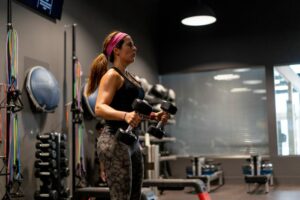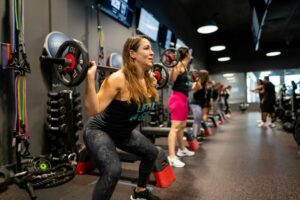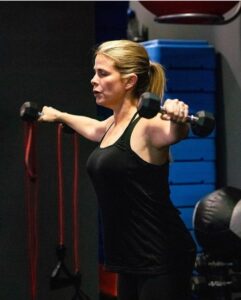Find your Goldilocks weight—not too heavy, not too light—by following these strategies.
- The Last Few Reps Should Always Be Hard.
- The Exercise You're Doing Will Help Determine the Right Weight.
- Practice Progression: Whether its strength training or cardio training, the key to progress is learning to challenge yourself. Learn to overload the muscles of your body to momentary muscle fatigue.
- When performing cardio, experience what speeds, levels, rpms get you out of your comfort zone.
A fundamental concept of resistance training is progressive overload. For your body to develop strength, and make new gains, you need to keep your body sufficiently challenged.
The Exercise You’re Doing Will Help Determine the Right Weight
The weight you use should correspond to the strength of the muscles you’re working. For example, your glutes are more powerful than your shoulders, so you’ll want a heavier weight for squats than you will for shoulder raises.
How to Know If Your Weights Are Too Light or Too Heavy
- A good indicator the weight you're using is too light is if you feel like you could do infinite amounts of reps without taking a break. While this may be great for your confidence, it's not going to help you build muscle and increse your strength. Common signs the weight you're lifting is too heavy are poor form and being unable to perform the designated sets and reps.
- If you easily finish all your reps and feel like you could’ve done an extra set, the weight is too light. You want to feel resistance and be challenged during those last few reps. Maybe you could’ve done one or two more reps, but no more than that. However, if you struggle to maintain proper form or can’t finish your set, the weight is too heavy.
- It will take a little trial and error to find your sweet spot. It’s better to start light and gradually increase the resistance until it feels challenging. With a weight that’s too heavy, you risk injury or using other muscles to compensate. For example, if you’re using weights that are too heavy during a biceps curl, you may rock your hips or rely on your back muscles to bring the weights up. Both throw your form out of whack.

If you’re doing a compound, multi-joint movement such as a squat, you can typically use a heavier weight. This is because the load is distributed across multiple muscles and joints.

When you perform isolated exercises like lateral raises for example, which target smaller muscle groups, the load should be lighter since less muscles/joints are involved.


You must be logged in to post a comment.